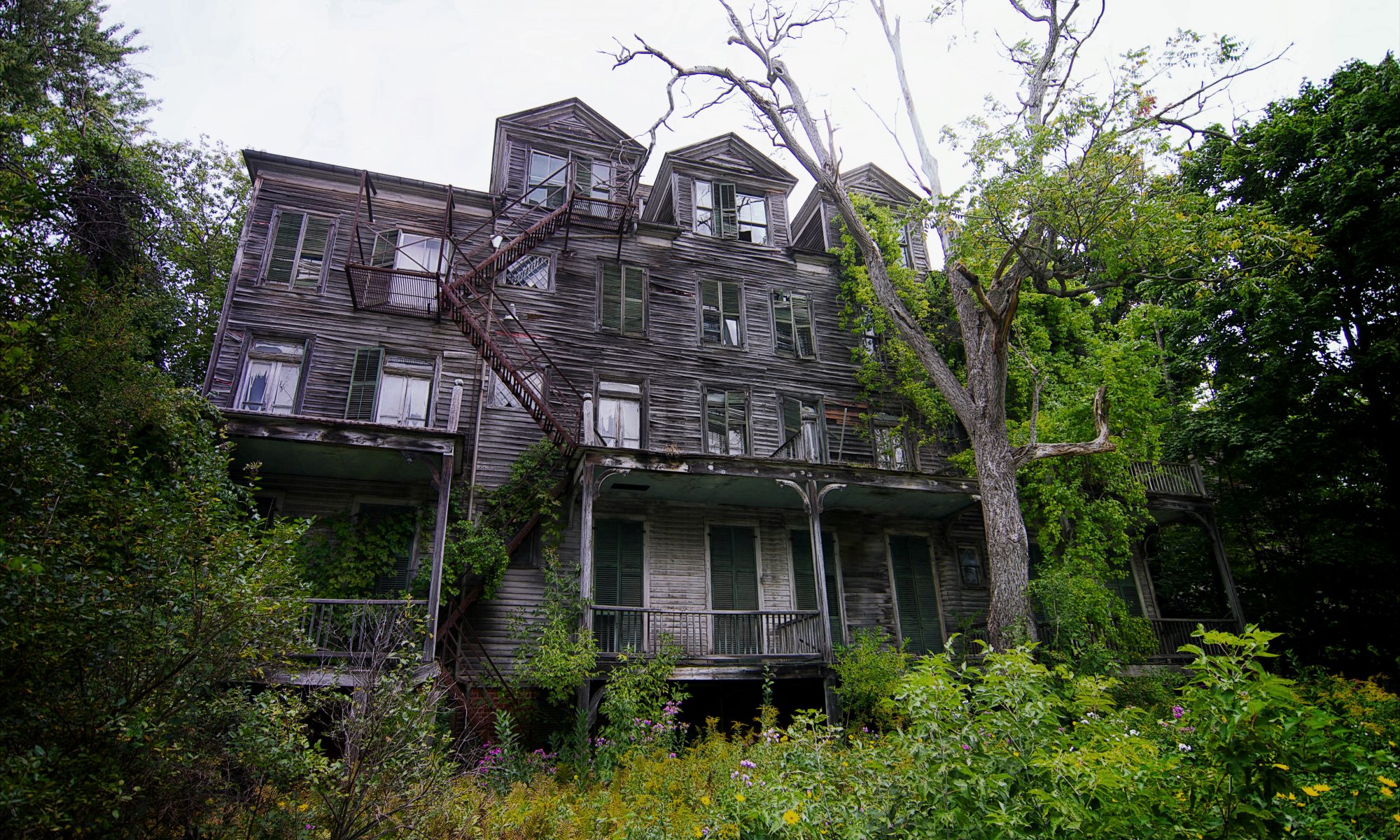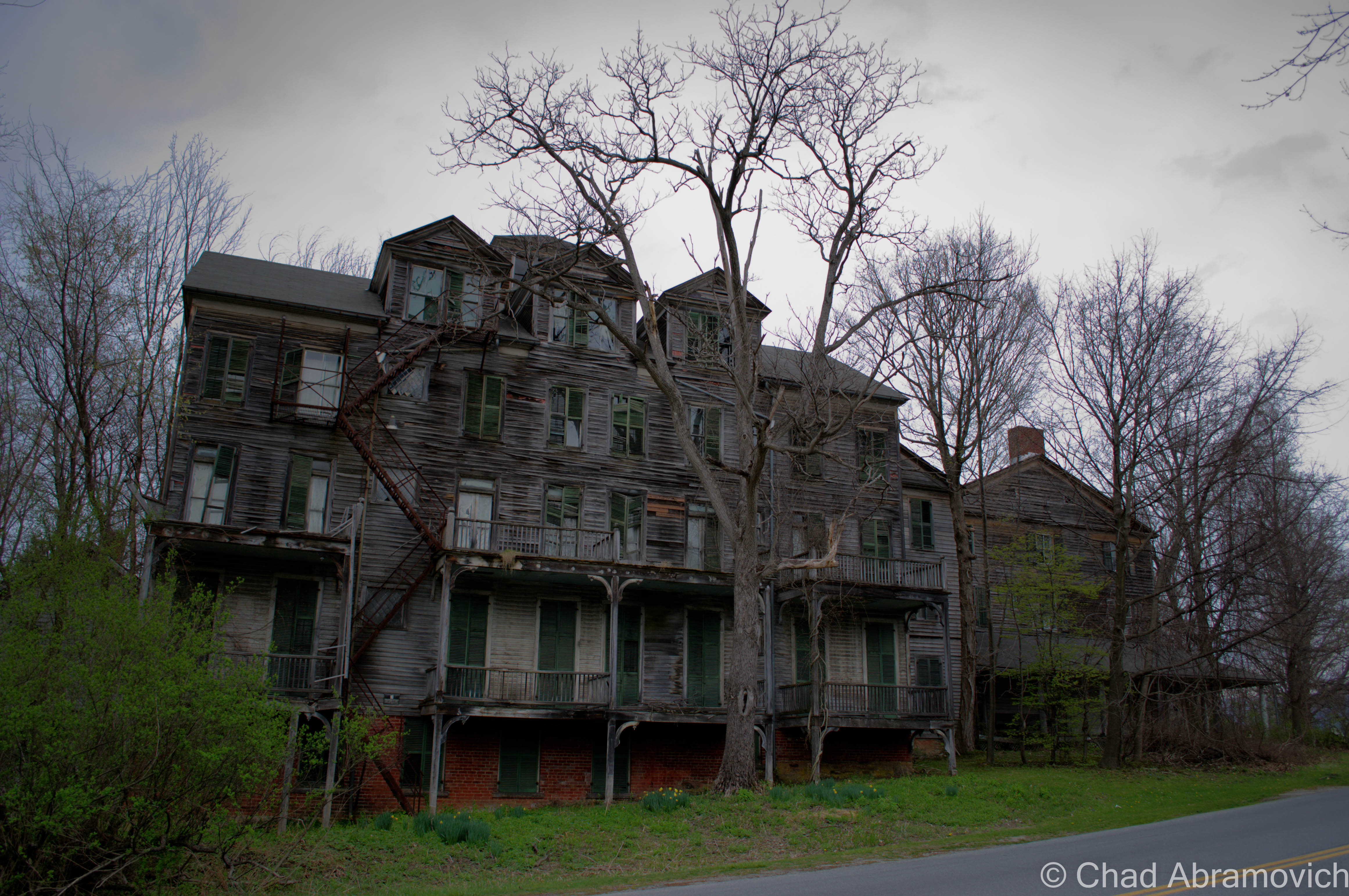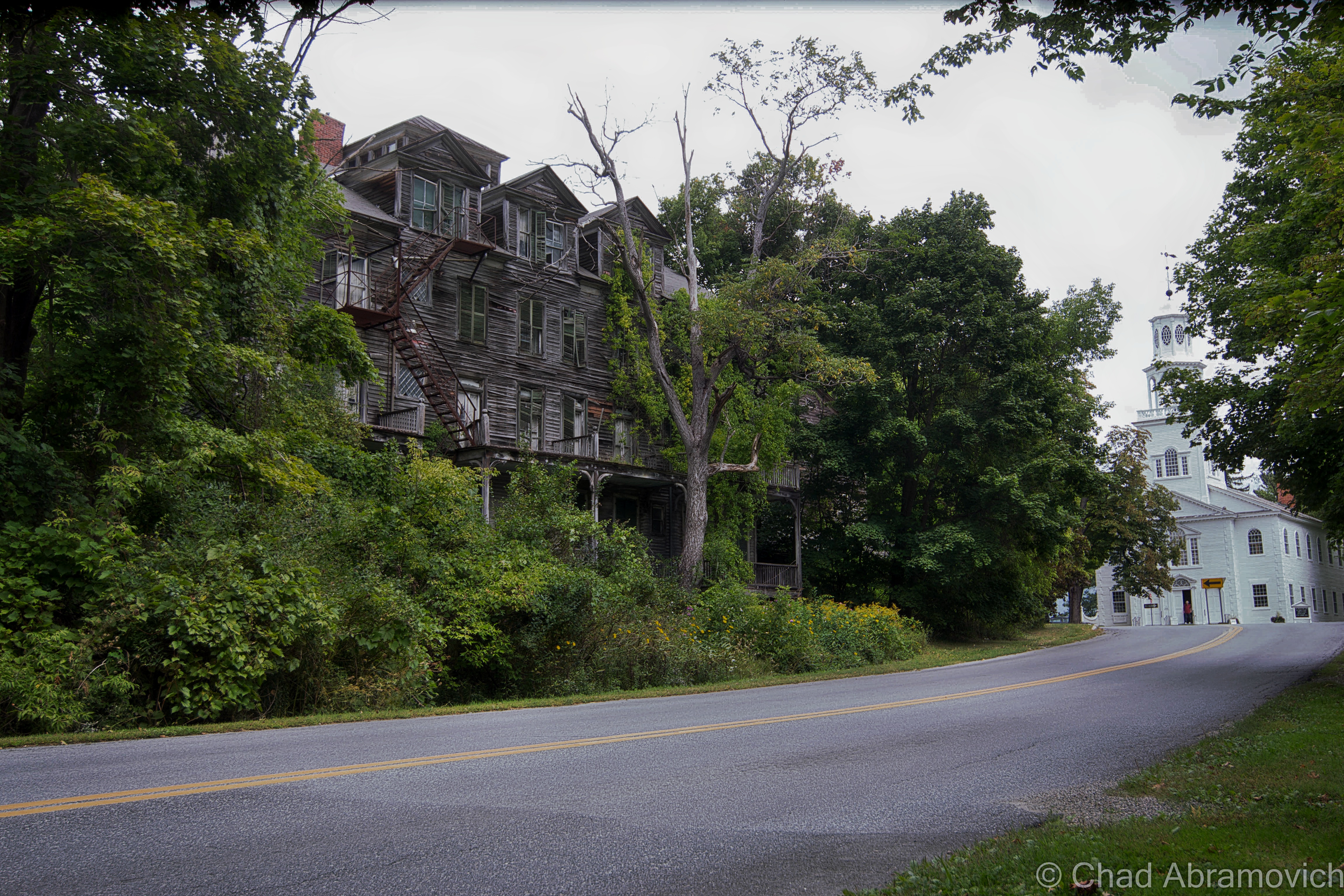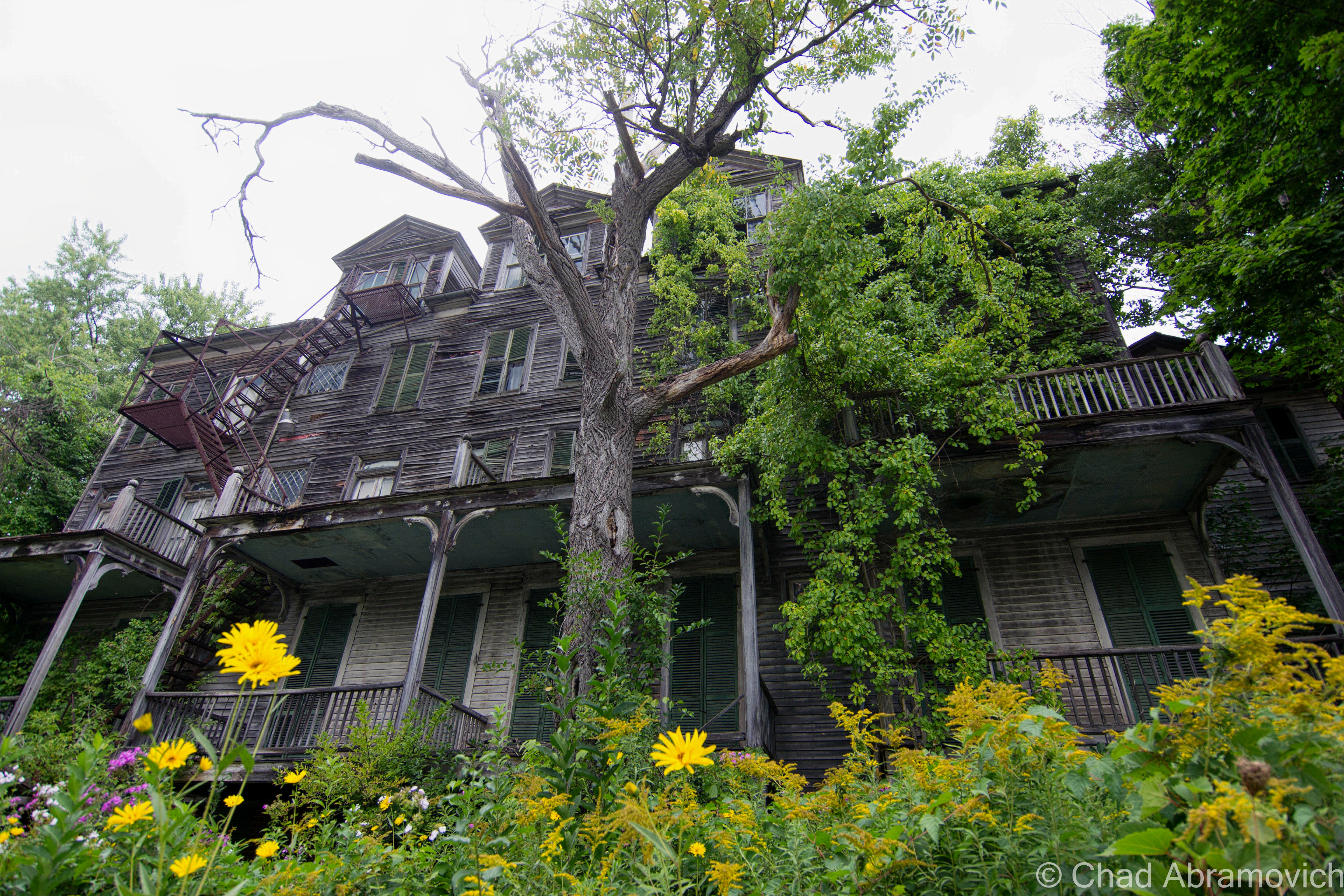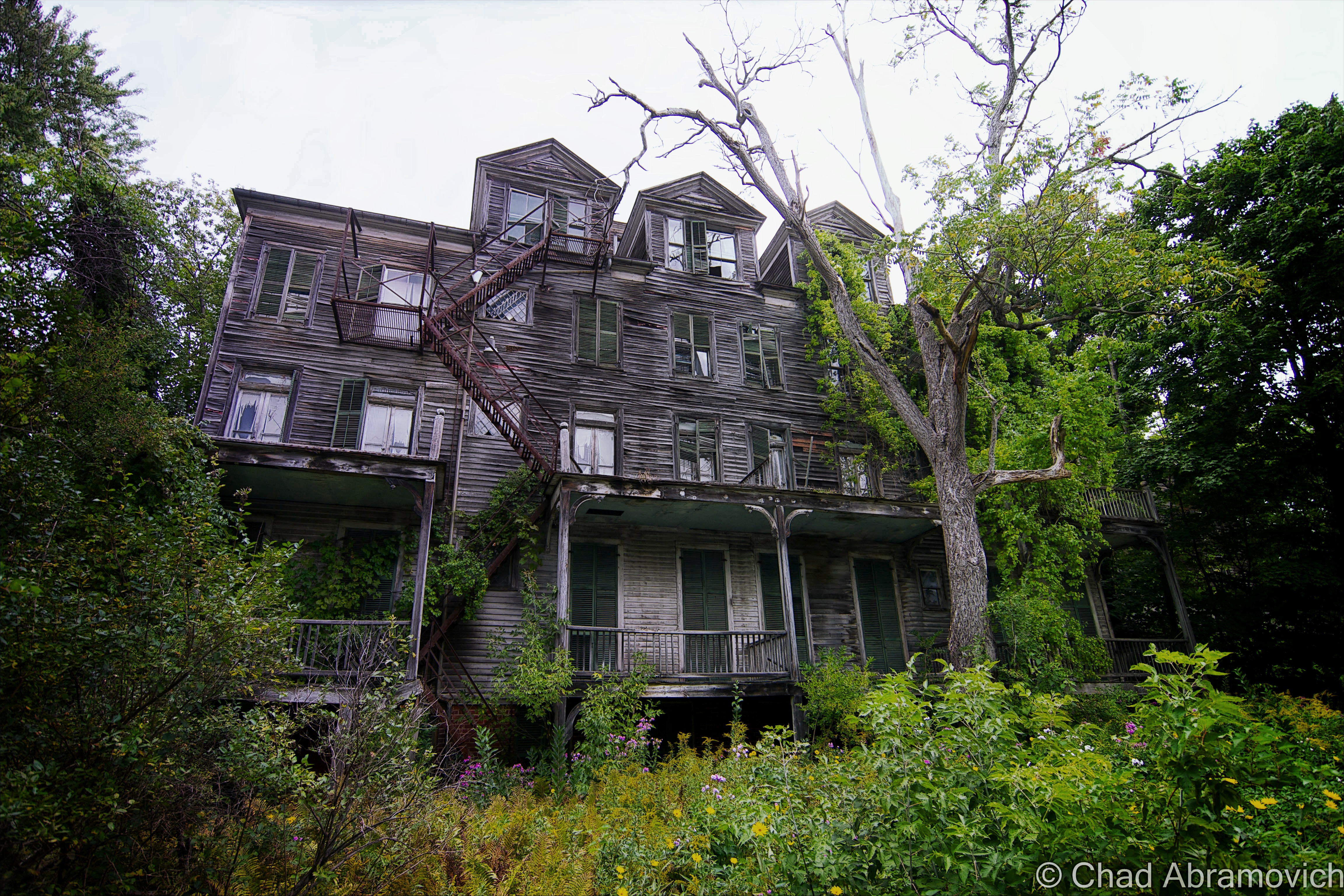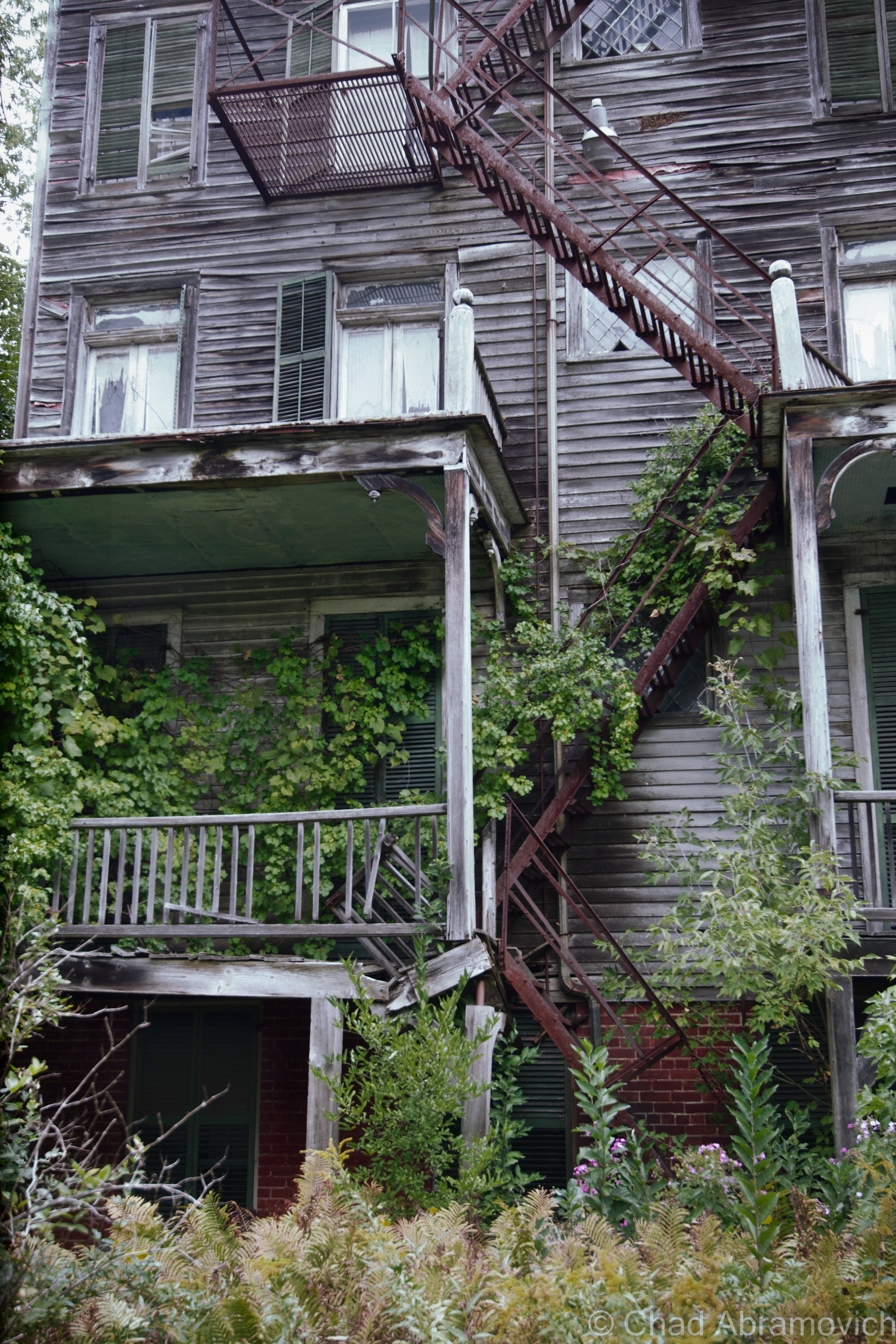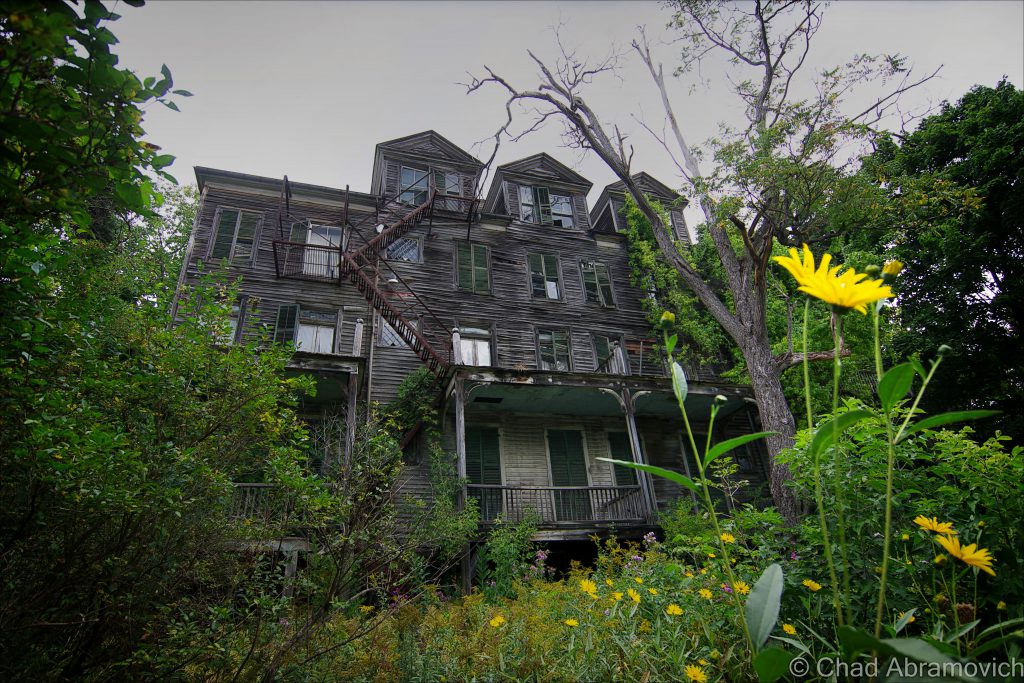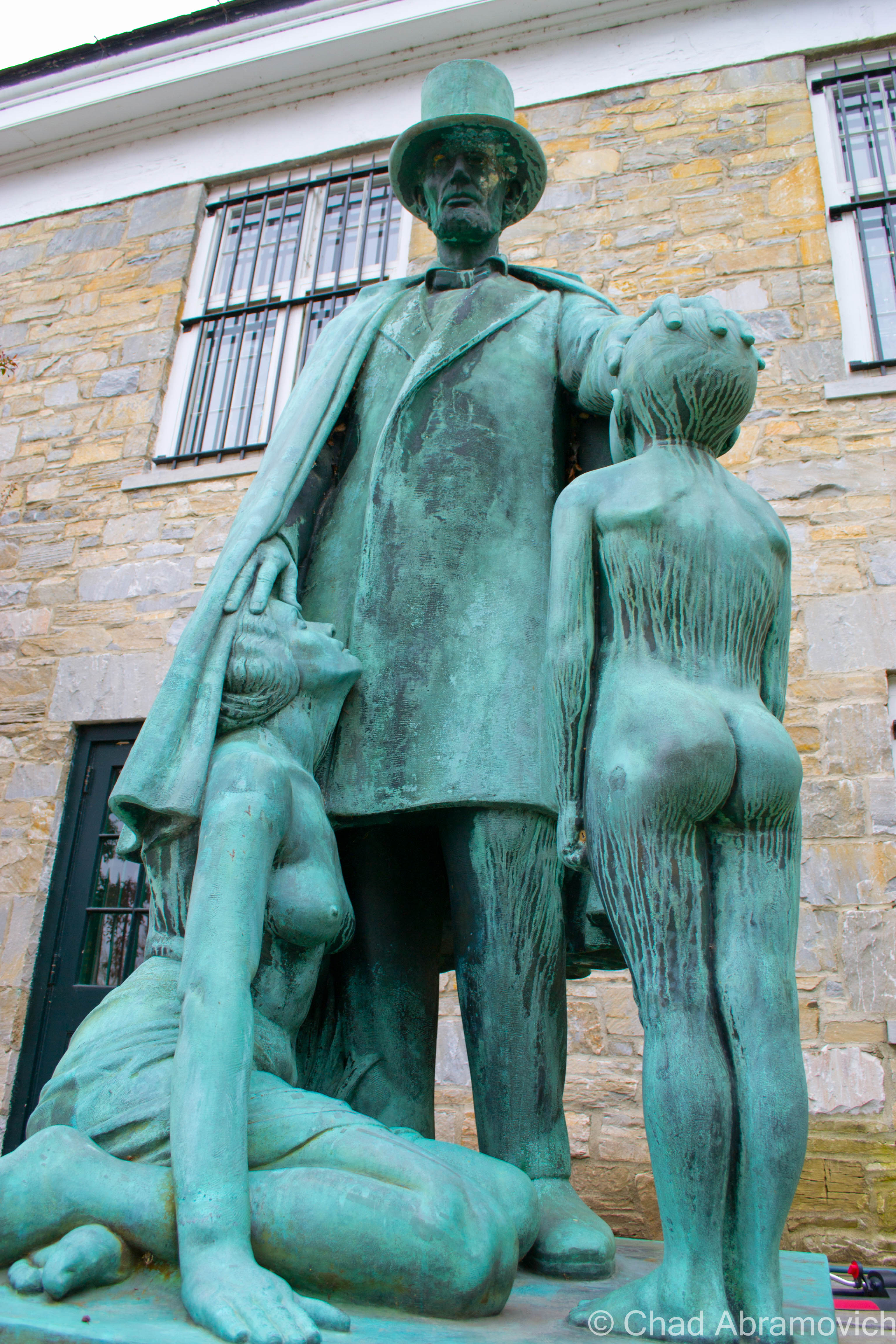It’s a point of pride for a community to be able to call themselves the home of something, or boast themselves as a standout locality. Bennington’s tourism slogan bills itself as “Where Vermont begins”, and that’s pretty accurate. The sizable town is located on the right angle that creates Vermont’s southwest corner, 6 miles from both the Massachusetts and New York state borders on U.S. Route 7, the most traveled road in the state.
Bennington is the type of town that probably prefers to be known for its verdant scenery, state-mandated lack of billboards and quaintness with a pricey college and liberal vibe. But more cryptically, it’s also another gateway – to the state’s fabled Bennington Triangle, a vast area of mountainous wilderness to the northeast of town where people have been known to disappear without a trace. Though the “Bennington Triangle” won’t appear on Google maps or a Rand McNally atlas, Old Bennington certainly will.
The area of town known as Old Bennington is just that – it’s the oldest settled part of town, and an official historic district located on state Route 9 west of the present day Downtown. Probably the most identifiable landmark in a neighborhood of colonial-era homes, old burial yards and white picket fences, is a brooding structure towering behind a veil of trees and creeping vines. This locale upholds as my favorite sight in town. Maybe because it looks like it doesn’t belong right in the epicenter of the tourist hub historic district that prides itself on aesthetics, or maybe it’s because it holds a great mystic to it.
It’s sagging porches and balconies and weather-beaten wood facade with crooked shutters conjuring a wistful image that carries the weight of its ghosts. The building successfully drew my attention, and apparently every other passing car, as many slowed down in front of me to take a better look at the place before speeding up back to the legal limit and heading down the hill towards downtown. So, what is this place? Its appearance is so galvanizing that it’s impossible not to go woolgathering when you gaze at its gray entropy and wild vines against the idyllic clean whiteness of the clapboard church that sits just at the other end of the corner.
You’re staring at the ruins of The Walloomsac Inn, once a venerable hotel with a storied legacy, now an intriguing eye magnetic corpse that mystifies and takes your attention successfully.
However, despite appearances, it’s not abandoned. The family who owned the hotel in the last years of its life, still live there. I recall hearing a story where, years ago, a writer for the Bennington Banner ventured to the front door to check the place out, and was not so pleasantly surprised when the owner greeted them.
So, what’s the story here? The Bennington Museum website turned out to be a great source of information. The hotel has the distinction of being the oldest in Vermont, something most people would probably never guess. Dated back to 1771, the mystery immediately begins with its construction. Popular wisdom states that it was built by Elijah Dewey, son of Bennington’s first minister, but others have said that claim is false, leaving it up for speculation, but from my research, the inn was first run by the Dewey family. The original structure still stands today, the part directly facing the cemetery, which also happens to be the part of the hotel that is still currently inhabited.
In 1818, the inn was purchased by James Hicks and his family and became known as Hicks Tavern. The tavern doubled as a stagecoach stop, and because the journey to and from New York was a long one, taking around four days to complete, its location proved to be good for business. Hicks eventually enlarged the building in 1823, adding the third floor and installing a ballroom on the second floor.
The Inn grew in popularity until 1848 when the railroad came to the region, ending stagecoach travel. While many herald the railroad as a cause for celebration, Bennington was served by something called a “corkscrew line”, operated by the Rutland Railroad, which is as terrifying as it sounds. The stretch of tracks were known for their “spectacular derailments“, which probably weren’t as celebrated. The inn was purchased by George Wadsworth Robinson, who changed its name to Walloomsac House, after the river of the same name which runs nearby. But business was never quite as successful as it was during the stagecoach era, when travelers would arrive at its doorstep, so in a vain effort to attract summer visitors, Robinson constructed observatory towers on nearby Mt. Anthony, which would have offered impressive views of 3 mountain ranges; The Greens, Berkshires and Taconics. Unfortunately, the mountain’s high winds often blew them over and because putting people’s lives at risk is bad for business, the idea was abandoned. Eventually, the hotel changed hands again, this time it was bought by Mrs. Mary Sanford Robinson and her brother, Samuel Sanford.
In 1891 Sanford hired a proprietor named Walter Berry, who after five years was able to purchase the inn and it has been owned by the Berry family ever since. Walter Berry decided to expand the hotel, and added the large three-and-a-half-story addition on the rear of the original building, which is probably the most photographed part of the hotel.
The hotel operated sluggishly until around 1996, the property closed for good, and time has sadly not been kind to it. I spoke to a few people who recall staying there during the 80s, and gave me descriptions of the place being dusty, run down and musty, with sort of an uncomfortable feeling attached to it.
If this blog has been able to prove anything, it’s that things fade with time and neglect – the Walloomsac wasn’t immune to that rule, and continues to deteriorate for all to see. The current owners most likely can’t afford the massive bill to fix it up, and state historic preservation regulations no doubt have provided a massive obstacle to deal with, but its state of limbo is a rather curious one. The information on the internet is surprisingly sparse.
I can only imagine what the inside must look like. Are there dark and musty hallways and ancient guest rooms covered in dust and disarray? Does sunlight swirl through the gaps in the broken shutters, making linear patterns on the dirty walls? Or perhaps it has been renovated and cleared over the years, leaving only the shell? Or maybe, the grungy outsides are hiding a lavish interior, which would be a great joke and a lesson on judgment all in one.
A friend of mine, who has an obsession with the old hotel, had stopped in Bennington in May of 2015 and wrote me an email with some further clarification about its condition.
The hotel’s current owners, descendants of the Berry family, are merely following instructions of the family will, which stated that no one is to touch the building, and to leave it as is. But, it seems they may have took it a little too seriously! While it may look like it’s going to collapse, another bit of research revealed that underneath the wry expression of its decrepit clapboard siding, the hotel is actually made of brick underneath, which is why the building is showing almost no sign of slumping or bowing into a shape that would rattle a state inspector. That was something that amazed me on my first visit.
While the old hotel, rotting in the middle of town, has a pretty storied history behind it, I sort of enjoyed the place more when it was enigmatic to me, and left my mind to its own devices.
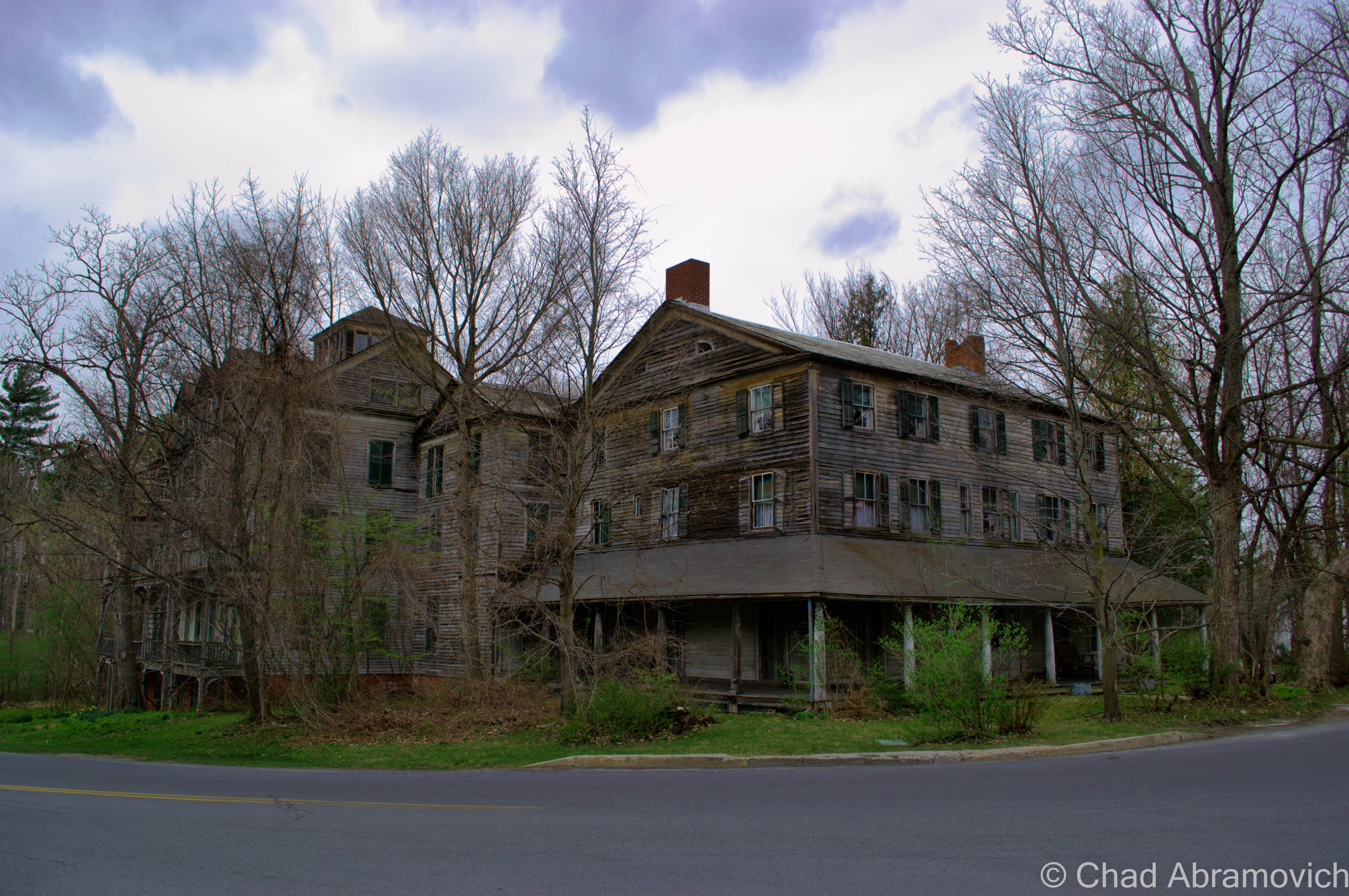
I stopped by again during summer’s last days of 2016 and got some more photographs. I will never object to making a jaunt here for a photo opportunity, it’s one of my favorite haunts in Vermont, and that day, a storm I was racing just happened to catch up with me outside, giving the place, and my photographs, some great atmosphere.
Years ago, I had the pleasure of befriending Stuart Clough in an urbex related Facebook group. We both had similar interests and personalities and just clicked. He is also interested in the Walloomsac, and actually got his hands on an old book that featured both its history and photographs of the inside! He graciously scanned the photos and sent them my way, which I was incredibly excited about. Thanks Stuart!
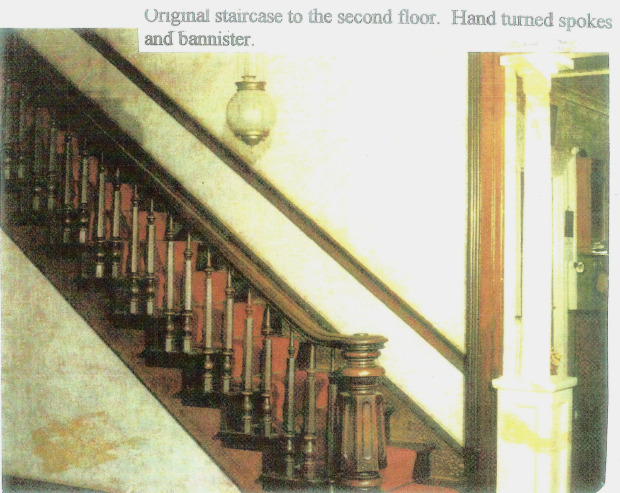
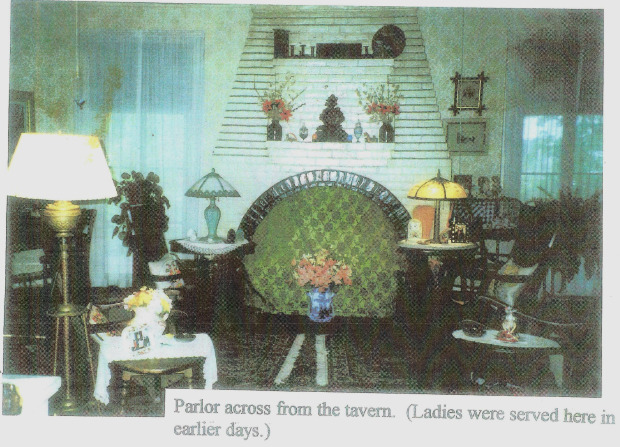
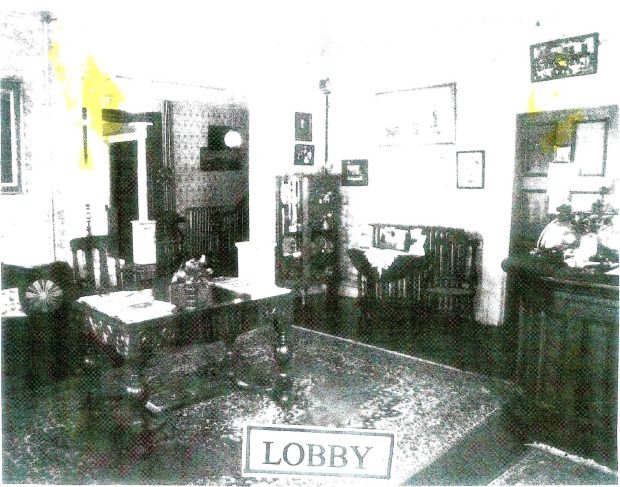
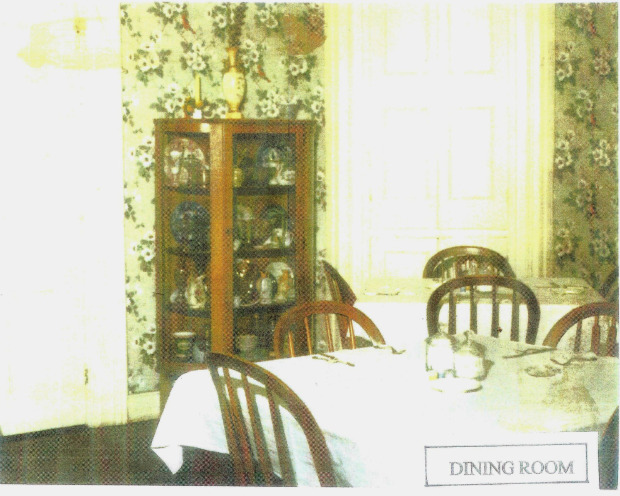
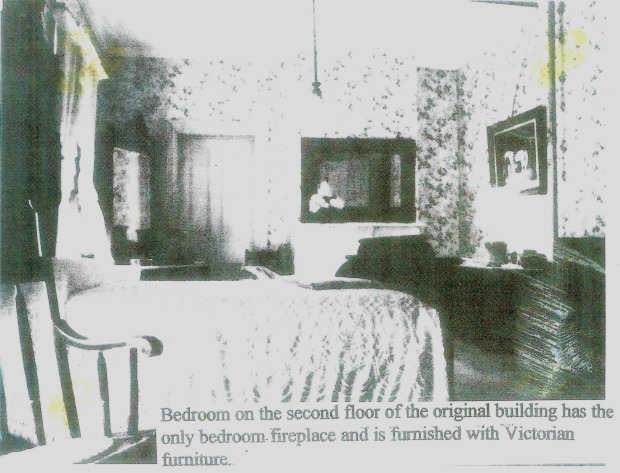
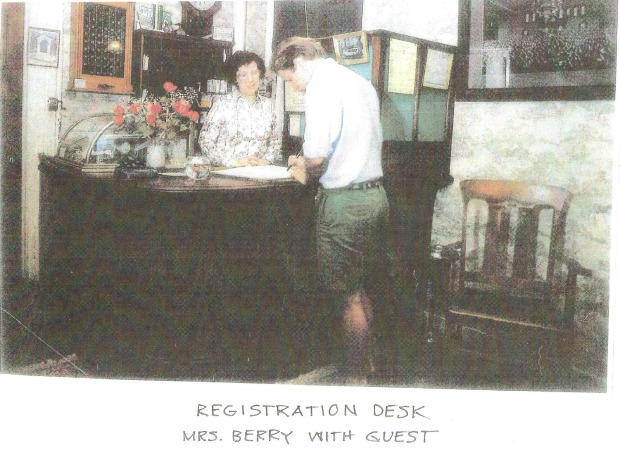
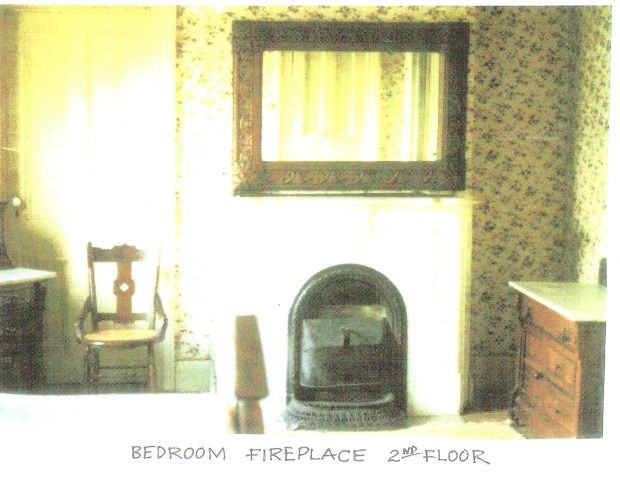
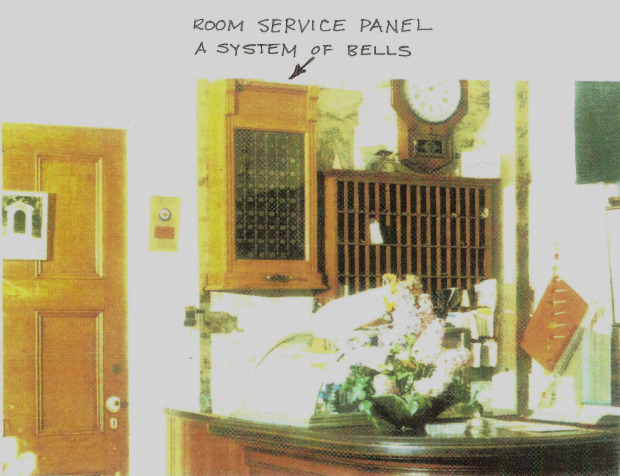
The Most Interesting Statue in Bennington
A passing thunderstorm was making its way over The Green Mountains, and the air became noticeably cooler, as a pungent earthy smell rode the winds that blew. The Walloomsac Inn underneath dark thunderheads certainly looked like the stereotypical haunted house.
Back in the car, myself and a good friend joining me for a road trip headed back towards Route 7, but stopped when we saw a startling statue in front of the Bennington Museum that looked all kinds of infelicitous. We pulled into the parking lot to get a better look, and I had no idea what I was staring at. A giant bronze statue of Abraham Lincoln with his green-ish weathered hands placed on the head of two naked companions, one of them a small child. What?
I’m sure there had to be a story here. Later on, Seven Days would come to my aid and answer the question behind this puzzling statue. As it turns out, the sculpture, designed by Clyde du Vernet Hunt, was actually intended to be more uplifting rather than suggestive.
In a nutshell, the two people kneeling in front of honest Abe were taken from two other sculptures he had commission earlier, the boy came from a piece called “Fils de France,” which depicted a naked boy gazing into the distance in his own reverie, was supposed to symbolize France’s rebirth. The girl came from his piece, “Nirvana”, which is said to represent “spiritual emancipation from passion, hatred, and delusion.” The figure of Abraham Lincoln was sculpted in 1920, and he made the unfortunate decision of combining the three pieces together, thus creating “The American Dream” – the official name of the sculpture. Maybe it’s just me, or maybe Clyde really missed the point he was going for.
The statue has become a landmark, but probably not like the artist would have wanted. Instead of a symbol for the virtuous, it acts as a novelty to teenagers who take their pictures with it. But I suppose, art is subjective.
—————————————————————————————————————————————–
To all of my amazing fans and supporters, I am truly grateful and humbled by all of the support and donations through out the years that have kept Obscure Vermont up and running.
As you all know I spend countless hours researching, writing, and traveling to produce and sustain this blog. Obscure Vermont is funded entirely on generous donations that you the wonderful viewers and supporters have made. Expenses range from internet fees to host the blog, to investing in research materials, to traveling expenses. Also, donations help keep me current with my photography gear, computer, and computer software so that I can deliver the best quality possible.
If you value, appreciate, and enjoy reading about my adventures please consider making a donation to my new Gofundme account or Paypal. Any donation would not only be greatly appreciated and help keep this blog going, it would also keep me doing what I love. Thank you!
Gofundme: https://www.gofundme.com/b5jp97d4


